The principle and application method of measuring coffee concentration by the fastest and most accurate coffee concentration measuring instrument
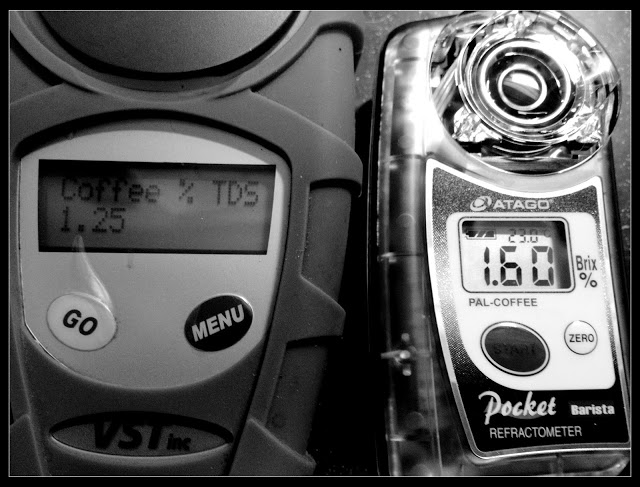
Professional barista communication, please pay attention to coffee workshop (Weixin Official Accounts cafe_style)
There are many ways to measure coffee strength, from the cumbersome drying method, to the less accurate conductivity meter or hydrometer, then to the Brix meter conversion, and finally to the VST refractometer digital refractometer; from then on, it is generally recognized that the fastest and most accurate measurement equipment is none other than this. Even after a few years ATAGO Japan launched PAL-COFFEE refractometer is also designed according to the same concept.
The average coffee bean has 30% soluble matter and 70% insoluble fiber. Statistical surveys conducted by Earnest Lockhart in the 1960s showed concentrations of 1.15 - 1.35% and 18 - 22% for Americans.(17 to 21 percent, according to Vince Fedele, founder of VST) would be the best range for flavor extraction, with Europeans preferring a higher concentration. To get the extraction rate, we can establish a set of coffee brewing standards, in addition to qualitative adjectives in the taste, there can be quantitative data for reference.
The VST refractometer hardware is designed and manufactured by MISCO and sold with software developed by MISCO. The basic structure is shown below, through the light source, prism, photoreceptor, using the prism liquid concentration changes, resulting in refraction angle difference, to convert its concentration.
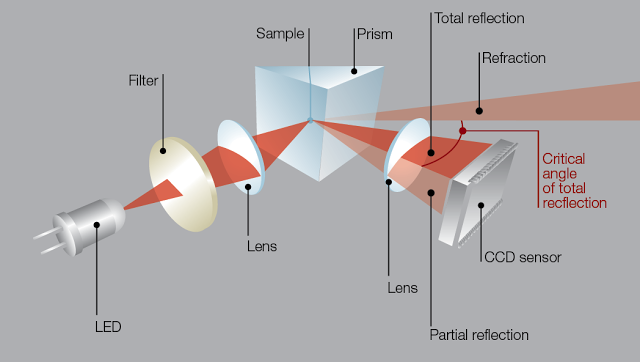
(Photo taken from Wikipedia)
The wavelength of light also affects the angle of refraction, which is how dispersion works. For example, the album The dark side of the moon picture, general light through different media, red refraction angle minimum, purple maximum. Refractometer if the use of such a combination of light sources, read the data will have a lot of error; currently known sodium light is the most simple, its wavelength composition is only two: 589.0 nm and 589.6 nm, very close, can be regarded as monochromatic light source, so the impact of dispersion will be reduced to a minimum, the data will be accurate and reliable. This is why yellow light is emitted when measuring concentrations, regardless of VST or ATAGO.
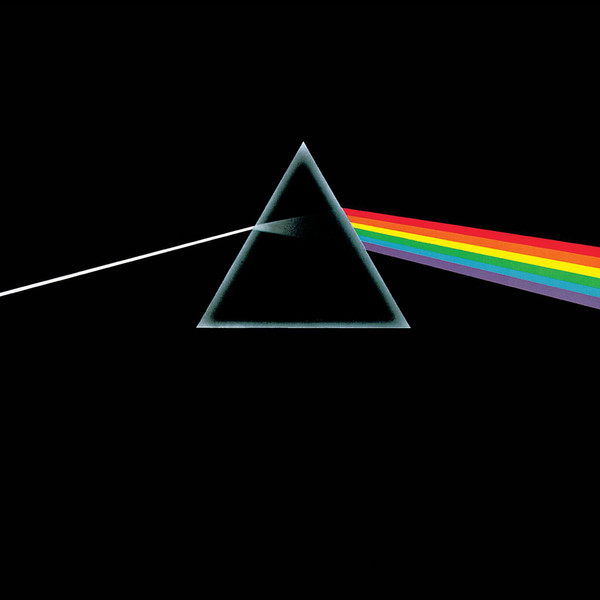
The dark side of the moon
I have been using this refractometer for several years. Recently, I reread the manual. The main points are as follows:
1. At least 0.03% measurement accuracy in the range of 15~30 ° C
2. Corrections are required when the room temperature changes by more than 1 degree (theoretically, but it is troublesome and does not seem to make much difference)
3. The sample temperature should be consistent with the prism temperature
4. Different wavelengths of light will give different TDS readings. Wavelength is inversely proportional to TDS. (VST/ATAGO already uses yellow light, no need to worry)
5. Measurement steps: Stir coffee evenly-> Sample-> Wait 60 seconds to cool-> Drop coffee on mirror-> Wait 30 seconds for temperature to be consistent-> Read value
The key point is that the temperature of coffee sample and prism must be the same, otherwise it will affect the accuracy of data; at first, it is often ignored because of impatience. VST II and PAL-COFFEE both I have, but PAL-COFFEE buy BRIX version, must be multiplied by 0.7947 conversion to TDS.
----------------------------------
Coffee Bean: Emerald Manor Sapphire 15g, Small Fuji Ghost Teeth Scale 2.5
Water: 250g, injection temperature 89 ° C
Use smart glass version: steam for 30 seconds, total soaking time 3 minutes
VST TDS: 1.25%
ATAGO Brix: 1.60%
A foreign comparative report A Refractometer Comparison mentions that VST II has a higher concentration value, while VST III and ATAGO have consistent results. When using VST II, some values may have to be deducted by themselves before they are more accurate.
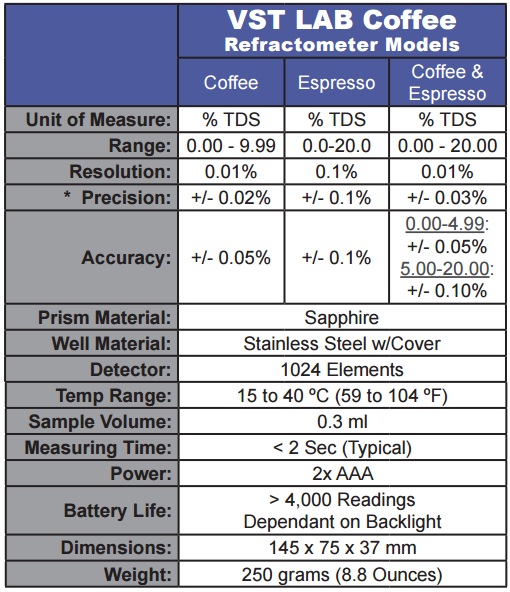
(VST II)
In addition, the above-mentioned sugar meter or coffee strength meter measures the refractive index of the solution, not the true sweetness or strength. Occasionally see someone on the network will misunderstand, at this time also do not need to explain more, ask the other side to bubble a cup of salt water to measure, can also get a very high value, you can prove that this is not sweet ah.
Important Notice :
前街咖啡 FrontStreet Coffee has moved to new addredd:
FrontStreet Coffee Address: 315,Donghua East Road,GuangZhou
Tel:020 38364473
- Prev
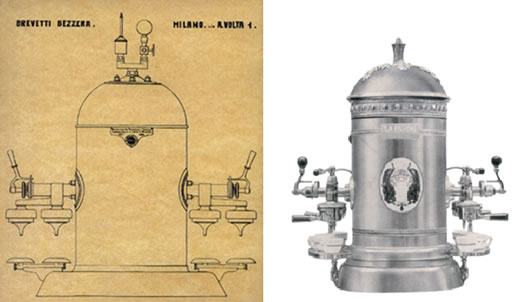
From coffee machine to hanging-ear coffee: several innovative inventions about coffee
Professional barista communication Please follow the coffee workshop (Wechat official account cafe_style) for modern people, it is not difficult to have a cup of coffee anytime and anywhere. If you want to brew a cup of mellow espresso (espresso) at home, there are a variety of household coffee machines to choose from, but when you taste the dense and meticulous coffee cream (crema), have you ever thought about it?
- Next
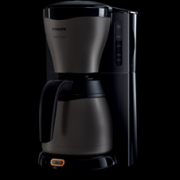
Saeco coffee machine descaling steps how to descale my Saeco Intelia espresso machine
Communication of professional baristas Please follow the coffee workshop (Wechat official account cafe_style) to remove the scale of the Saeco Intelia espresso machine, which helps to maintain the best condition of the product. Learn how to do it easily. It takes about 30 minutes to complete the descaling cycle before starting the descaling cycle, which includes descaling cycle and flushing cycle.
Related
- What is the Philharmonic pressure? How to use Philharmonic pressure to make delicious coffee
- Why does a hand grinder have more fine powder than an electric grinder?
- In addition to the hot mom, what is the difference between the versions of EK43 | ditting and Mahdi ek43?
- What kind of equipment do you need to make coffee by hand? Introduction to novice starter cooking equipment tools
- Espresso needs to be ground how thick and thin scale entry Italian Coffee Machine Bean Grinder investigation and Grinding course
- How much does it cost to open a small private cafe? How much does it cost to learn coffee? How to operate it?
- The difference between the flavor characteristics of hand-brewed coffee and coffee maker is hand-brewed coffee really better than coffee maker? Can I use a coffee machine to make coffee beans by hand?
- The difference between 01 and 02 of hario v60 filter cup what is the difference between 01 and 02 filter cup opening and cooking flavor
- What's the difference between the smart cup and the French kettle? Which is better, the French kettle or the Smart Cup?
- What's the difference between a smart cup and a V60 filter cup? The difference between the taste of smart cup and hand-brewed coffee

